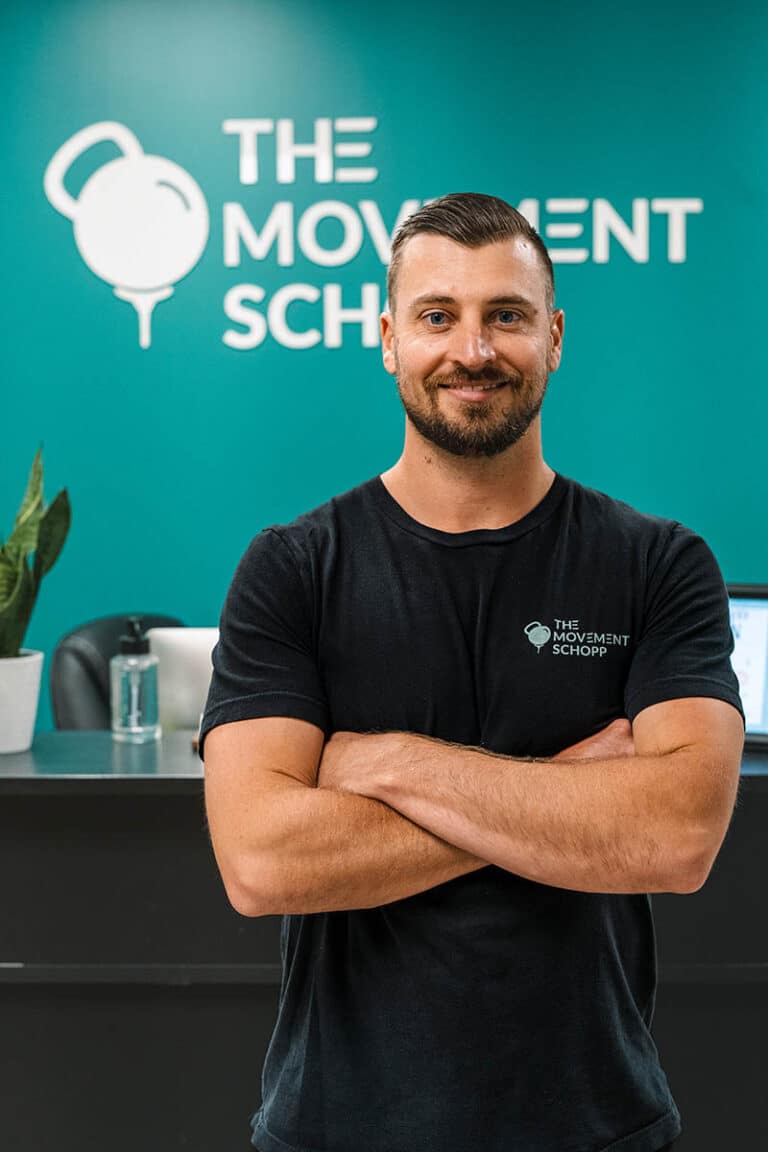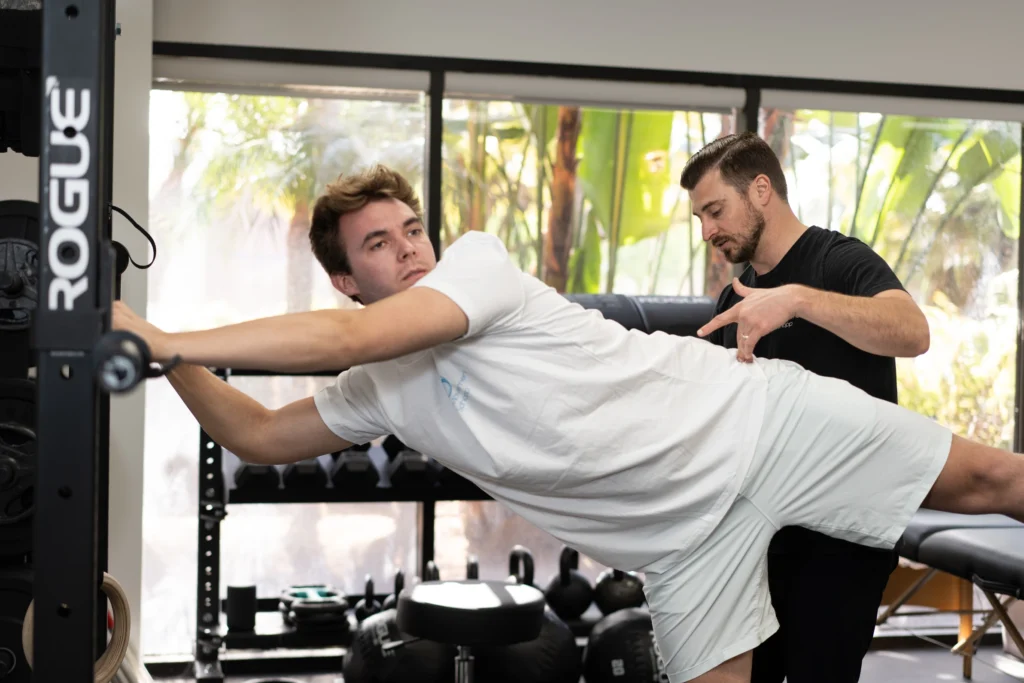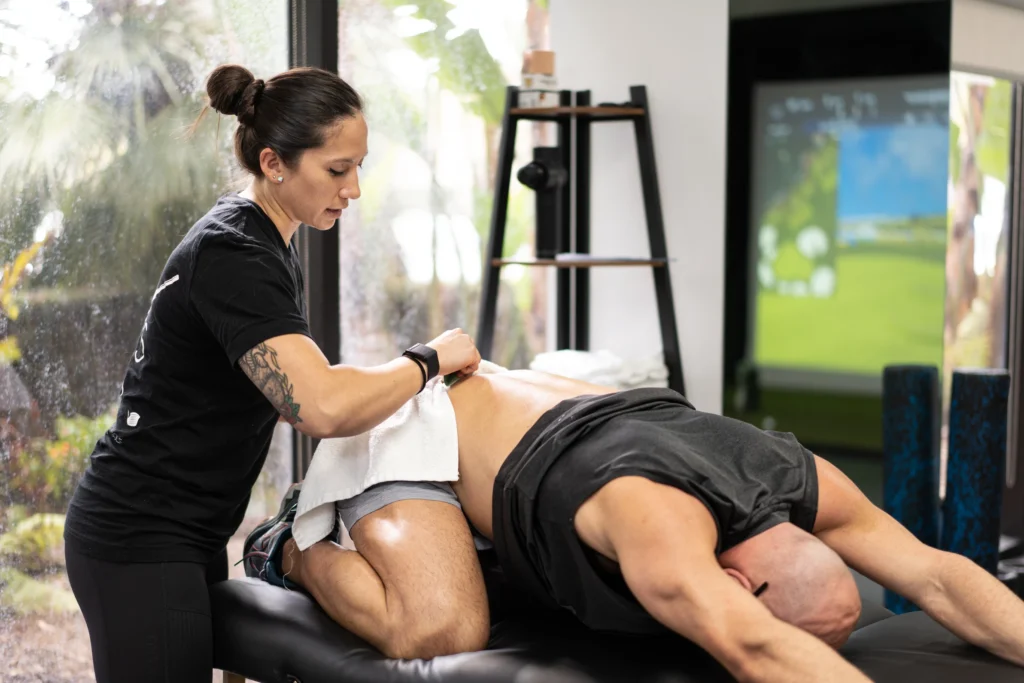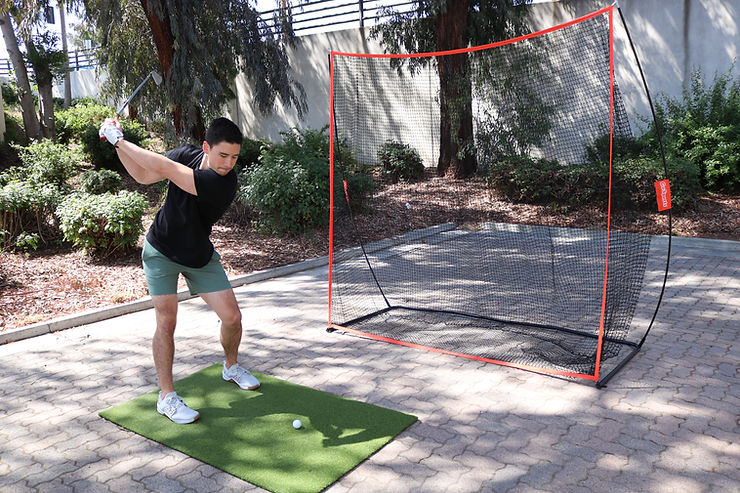Introduction
Herniated discs, also known as slipped, ruptured, or intervertebral disc herniations, can cause immense pain and discomfort in the lower back and other areas of the spinal column, including the cervical spine and thoracic spine. This condition occurs when the inner gel-like core of a spinal disc leaks out through its outer layer and puts pressure on nearby nerves.
The result is oftentimes shooting pain, numbness, and weakness in the affected area, disrupting daily activities. Physical therapy plays a crucial role in the management and treatment of herniated discs, offering non-invasive and effective methods such as therapeutic exercise, core strengthening, and improved body mechanics to alleviate symptoms and promote healing.
In this article, we will explore the different aspects of physical therapy for herniated discs, including its benefits, key disc exercises, and how it fits into a comprehensive treatment plan for this common spinal condition, often involving pain medications, ice packs, and diagnostic testing as recommended by a health care provider.
Anatomy of the Lower Back and Relation to Herniated Disc
The lower back, also known as the lumbar spine, plays a crucial role in supporting the weight of the upper body and facilitating movement. The lumbar spine is also where the majority of spinal disc herniation happens. It is composed of five vertebrae (L1-L5) stacked on top of each other, with intervertebral discs in between.
These discs, made up of a tough outer layer called the annulus fibrosus and a gel-like inner core called the nucleus pulposus, act as shock absorbers and provide flexibility to the spine. In the case of a herniated disc, the outer part of the disc becomes damaged or weakened, allowing the inner gel-like substance to protrude or leak out. This can occur due to sudden injury or gradual wear and tear over time.
The most common area for a herniated disc to occur is in the lower back, just below the waist level. This condition is more common for men than women, although cervical disc herniations can also occur for both sexes, affecting the neck.
What is Herniated Disc in Lower Back and How Does it Feel?
A herniated disc in the lower back, also known as a lumbar disc herniation, occurs when the soft inner part of a spinal disc pushes through a tear or rupture in the outer part. This condition is typically caused by sudden or prolonged strain on the spine, such as lifting heavy objects with poor posture or sitting or standing in a slouched position for extended periods.
The initial and most common symptom of a lumbar disc herniation is lower back pain. This pain may last for a few days and then subside, but it can reoccur periodically. As the condition progresses, leg pain, numbness or tingling, and weakness of the lower extremity may develop. The leg pain often starts below the knee and can even radiate down to the ankle and foot.
Addressing these symptoms often involves focusing on strengthening the abdominal and stomach muscles to support the spinal column and improve overall body mechanics and movement habits, particularly during the acute phase.
What Causes Herniated Disc in Lower Back
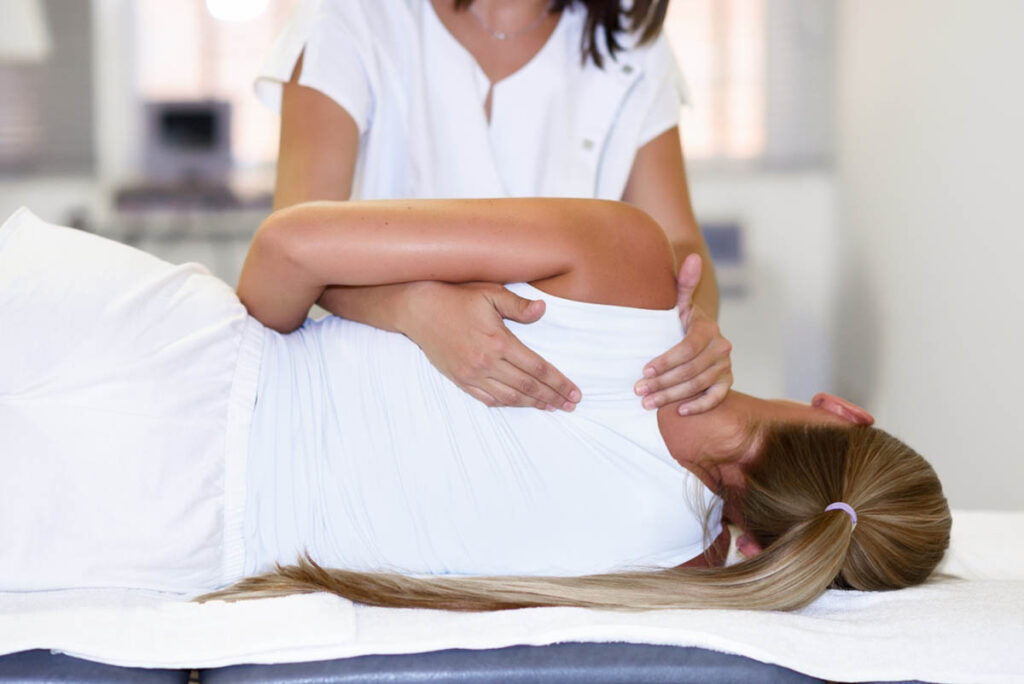
One common cause of a herniated disc in the lower back is excessive strain on the spine. This can happen when an individual lifts something heavy from an unsafe position, such as using their back instead of their legs and abdominal muscles. The strain exerted on the spine can cause the outer disc to burst, leading to a herniation.
It is important to practice proper lifting techniques and use caution when handling heavy objects to reduce the risk of herniating a disc in the lower back. Another cause of a herniated disc in the lower back is a tear on the outer part of the disc. Prolonged sitting, standing, or stooping with poor posture can gradually strain or tear the outer disc over time. This slow injury can weaken the disc and eventually lead to a herniation.
It is essential to maintain good posture and take regular breaks to avoid putting excessive stress on the spine, which can contribute to the development of a herniated disc. Regular engagement in physical examination, therapeutic exercise, and modifications in activity levels as guided by a healthcare provider can significantly contribute to the prevention and management of lumbar and cervical disc herniations.
Common Symptoms of Herniated Disc in Lower Back
A herniated disc in the lower back can cause a range of symptoms that can significantly impact a person’s daily life. Here are some of the most common symptoms associated with a herniated disc in the lower back:
- Inability to bend the back: A herniated disc can make it difficult to bend or flex the lower back. This limitation in movement can cause discomfort and affect one’s ability to perform simple tasks.
- Pain in the back: Lower back pain is typically the first symptom experienced by individuals with a herniated disc. The pain may vary in intensity, ranging from a dull ache to sharp, shooting pain. The pain may be localized to the lower back or radiate down into the buttocks, thighs, and legs. Lower back pain exercises may help in alleviating these symptoms.
- Numbness or tingling: As the herniated disc puts pressure on the surrounding nerves, it can lead to numbness or tingling sensations in the lower back, buttocks, legs, and feet. This sensation may come and go or persist for extended periods.
- Intense discomfort during coughing or sneezing: Any sudden movement that increases pressure in the lower back, such as coughing or sneezing, can exacerbate the pain caused by a herniated disc. This discomfort can be sharp and intense.
- Inability to stand up straight: The pain and stiffness associated with a herniated disc can make it challenging to maintain an upright posture. Individuals may find themselves hunching over or leaning to one side to alleviate the pain.
- Difficulty standing up from a sitting posture: Sitting for prolonged periods can worsen the pain caused by a herniated disc. When attempting to stand up from a sitting position, individuals may experience difficulty due to the stiffness and pain in the lower back.
- Difficulty in maintaining a specific position for long periods: Sitting or standing in the same position for an extended period can aggravate the symptoms of a herniated disc. People with this condition may find it challenging to stay in one position for too long without experiencing discomfort.
- Pain worsens the next morning: Many individuals with a herniated disc in the lower back report that their pain level is worse in the morning. This could be due to the body being in a resting position overnight, leading to stiffness and increased pain upon waking up.
It’s important to note that these symptoms may vary from person to person, and not everyone may experience all of them. If you suspect you have a herniated disc in your lower back, it’s crucial to seek a proper diagnosis and consult with a healthcare professional for conservative care, active treatment for pain relief, and other appropriate treatment options.
How Physical Therapy for Herniated Disc Can Help
Herniated disc physical therapy can play a crucial role in disc recovery. It offers a non-invasive and conservative approach to managing pain, improving mobility, and enhancing the overall quality of life for individuals with this condition.
One of the primary goals of physical therapy for herniated disc is to reduce the pressure on the spinal nerves. A physical therapist can design a customized treatment program that includes exercises and techniques aimed at relieving this pressure. These exercises are tailored to the individual’s specific directional preferences, targeting the compressed nerves to alleviate pain and discomfort.
Is Physical Therapy Effective for Treating Herniated Disc?
When it comes to treating a herniated disc, physical therapy has proven to be a highly effective and non-invasive option for many individuals. This condition, which occurs when the gel-like core of a spinal disc leaks or becomes damaged, can cause pain and limited mobility. However, with the right exercises and treatments provided by a skilled physical therapist, patients can experience relief and regain normal function.
One of the main benefits of physical therapy for herniated discs is its ability to reduce pressure on the spinal nerves. Through targeted exercises, a physical therapist can help relieve compression on the nerves, alleviating pain and other symptoms. Additionally, physical therapy can help strengthen the muscles that support the affected area of the spine, increasing flexibility and stability.
Lower Back Physical Therapy Exercises for Herniated Discs
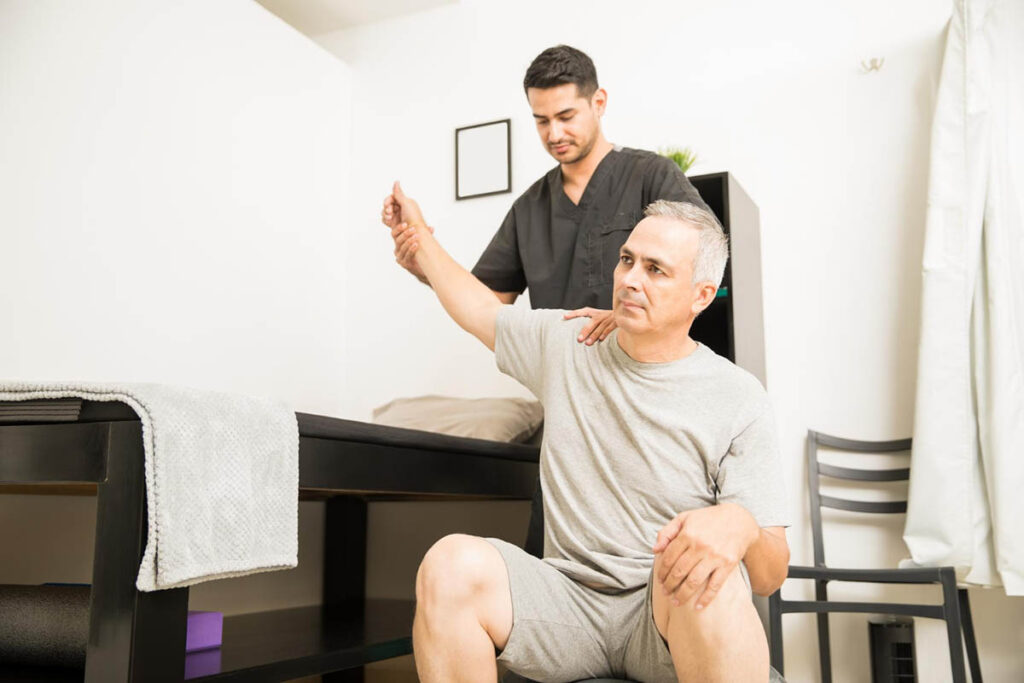
Here are five effective gentle exercises recommended by physical therapists for individuals with a herniated disc in the lower back to relieve muscle spasms, improve range of motion, and offer relief for pain caused by herniated discs:
- Back Flexion Stretch: This exercise helps to stretch and relieve tension in the lower back. Start by lying on your back with your knees bent. Gently bring both knees towards your chest, using your hands to pull them closer. Hold this position for 15-30 seconds, then slowly release. Repeat this stretch 3-5 times.
- Knee to Chest: Similar to the back flexion stretch, the knee-to-chest exercise helps to stretch the lower back and relieve pressure on the herniated disc. Begin by lying on your back with your legs extended. Slowly bring one knee towards your chest, using your hands to gently pull it closer. Hold for 15-30 seconds, then switch legs. Repeat this stretch 3-5 times on each side.
- Prone Extension: The prone extension exercise helps to strengthen the muscles in the lower back and improve spinal stability. Start by lying flat on your stomach in a neutral position, with your hands resting on the floor near your shoulders. Slowly lift your upper body off the ground, using your arms for support, while keeping your hips and legs relaxed. Hold this position for 5-10 seconds, then lower back down. Repeat this exercise 10-15 times.
- Piriformis Muscle Stretch: The piriformis muscle is located deep within the buttocks and can contribute to lower back pain when tight or inflamed. To perform this stretch, sit on the edge of a chair with one foot crossed over the opposite knee. Gently press down on the raised knee until you feel a stretch in the buttocks. Hold for 15-30 seconds, then switch sides. Repeat this stretch 3-5 times on each side.
- Bird Dog: The bird dog exercise targets the core muscles and helps to improve stability and balance. Start on all fours with your hands directly under your shoulders and your knees under your hips. Slowly extend one arm forward while simultaneously extending the opposite leg backward. Hold this position for a few seconds, then return to the starting position and switch sides. Repeat this exercise 10-15 times on each side.
Benefits of Physical Therapy for Herniated Disc in Lower Back
Physical therapy for herniated disc in lower back offers numerous benefits for individuals suffering from a herniated disc in the lower back. This non-invasive treatment approach focuses on reducing pain, improving symptoms, and promoting healing. By working with a physical therapist, patients can experience significant improvements in their condition and overall quality of life.
One of the primary benefits of physical therapy for herniated disc is the reduction of pressure on spinal nerves. Through targeted exercises and therapies, physical therapists can help alleviate the compression of nerves caused by the herniated disc. This can lead to a decrease in pain and discomfort, allowing for improved mobility and function.
In addition to pain reduction, physical therapy exercises for herniated disc also aim to build strength and increase flexibility in the muscles that support the affected area of the spine. By strengthening these muscles, patients can experience better stability and support, which can further alleviate symptoms and prevent future injuries. Physical therapists customize exercise programs to suit each individual’s needs, ensuring that proper form is maintained to avoid any additional stress to the back and neck.
Finding a Qualified Physical Therapist
When seeking treatment for a herniated disk, it is essential to find a qualified physical therapist who can provide the necessary expertise and guidance. Here are some tips to help you find the right physical therapist for your needs:
- Seek Recommendations: Start by asking for recommendations from your family, friends, or other healthcare providers. They may have firsthand experience or know someone who has received treatment for a herniated disk and can provide valuable insights.
- Use Online Tools: The American Physical Therapy Association has developed an online tool called Find a PT, which allows you to search for physical therapists with specific clinical expertise in your geographic area. This can help you find therapists who specialize in treating orthopedic or musculoskeletal problems, including herniated disks.
- Check Credentials: Look for physical therapists who are board-certified clinical specialists or have completed a residency or fellowship in orthopedic physical therapy. These therapists have advanced knowledge and skills that may be particularly relevant to your condition.
- Inquire About Experience: When contacting a physical therapy clinic for an appointment, ask about the physical therapists’ experience in treating people with herniated disks. It is important to find therapists who have a track record of helping individuals with similar conditions.
- Prepare for Your Appointment: Be ready to describe your symptoms in detail and explain what exacerbates them. This information will help the therapist better understand your condition and tailor the treatment program to meet your specific needs.
Finding a qualified physical therapist is crucial for the success rate of physical therapy for herniated disc. A skilled therapist will design a personalized treatment program to help you regain normal movement, reduce pain, and get back to your regular activities.
What to Expect During Physical Therapy for Herniated Disc
When it comes to treating a herniated disc, physical therapy can be an effective and non-invasive option. By working with a physical therapist, you can expect to receive personalized care and guidance to help alleviate pain and improve your overall condition, including other physical therapy for posture correction if needed.
During your first session of physical therapy for a herniated disc, your therapist will conduct an assessment to determine the location of the herniated disc and identify any pinched nerves. This information will help them tailor a treatment plan specifically for you.
One of the main goals of physical therapy is to reduce the pressure on your spinal nerves caused by the herniated disc. Your therapist will guide you through exercises that target the affected area and aim to relieve pressure and alleviate pain. These exercises will be based on your directional preferences, meaning they will be designed to move your spine in a way that provides relief.
In addition to relieving pressure, physical therapy will also focus on building strength and increasing flexibility in the muscles that support your spine. Core stabilization exercises are typically included in the treatment plan to help improve posture and provide stability to the affected area.
Consult The Movement Schopp For Your Back Health
At The Movement Schopp, we offer specialized physical therapy treatment services for herniated discs to provide relief and improve your quality of life. Our expert physical therapists understand the complexities of this condition and can design a personalized treatment program tailored to your specific needs. Through a combination of hands-on therapy, prescribed exercises, and education, we aim to reduce pain, increase mobility, and enhance your overall well-being.
Conclusion
Successfully managing complex clinical presentations such as herniated disc, requires a systematic approach that prioritizes biomechanical principles. While there are no guarantees of a positive outcome, implementing evidence-based strategies within the constraints of the problem can significantly improve the chances of a successful rehabilitation process.
FAQS
Can a herniated disc heal with physical therapy?
Physical therapy is a highly effective treatment option for healing a herniated disc. By reducing pressure on the spinal nerves and strengthening the muscles that support the affected area of the spine, physical therapy can alleviate symptoms, improve mobility, and enhance quality of life.
What is physiotherapy for herniated disc?
Physiotherapy for herniated disc involves a structured program of exercises and treatments aimed at relieving pressure on spinal nerves, improving strength, and increasing flexibility in the affected area of the spine. The goal is to reduce pain, improve function, and restore a normal and pain-free lifestyle for individuals with a herniated disc.
When should I start physical therapy for a herniated disc?
Starting physical therapy for a herniated disc depends on several factors, including the severity of your symptoms, the specific recommendations of your healthcare provider, and your overall health condition. Generally, conservative treatment, including physical therapy, is recommended as an initial approach for managing herniated disc symptoms.

